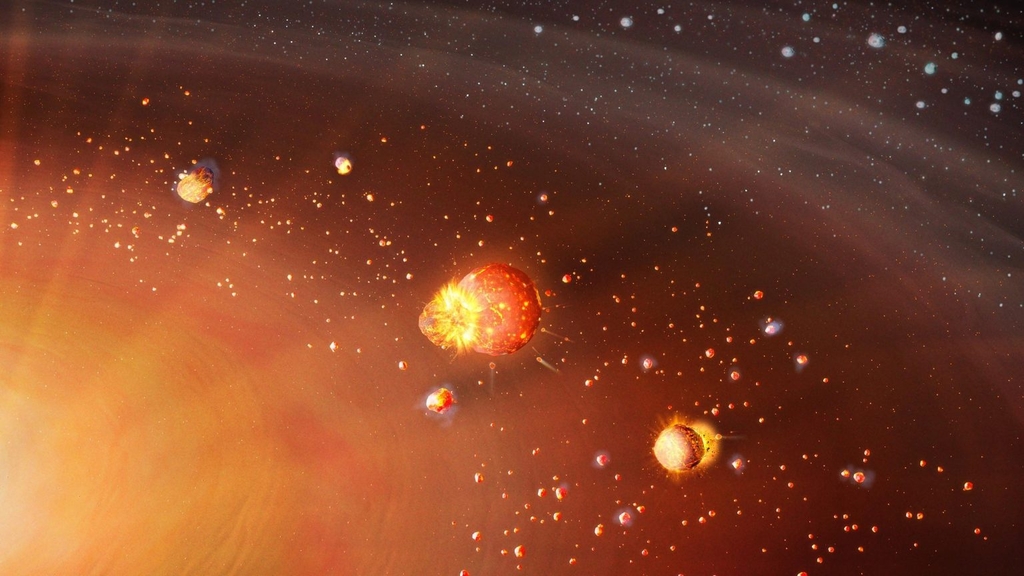The astonishing system of exoplanets TOI-178
Astronomers from the University of Geneva and the University of Bern studied a system of 6 planets, only 205 light-years away, that could help understand the processes leading to the formation of systems with multiple planets.
The data for this study was obtained with the European Space Agency’s CHEOPS space telescope and ground-based instruments, including a spectroscope on the Very Large Telescope and “SPECULOOS” at the European Southern Observatory’s Paranal Observatory, which detects exoplanets’ transits around cool stars. TOI-178 contains 6 planets, with masses ranging from 1.5 to 30 times the Earth’s and they are between 1 and 3 times its size (“super-Earths” to “mini-Neptunes”). They orbit an orange dwarf star, or K-type on the Hertzsprung-Russell diagram, which is a main sequence star with a mass of 0-5-0.8 times the Sun’s, hence the appellation dwarf. Slightly less warm than the Sun (which is a G-type star), a K-type star therefore has a longer lifetime, which makes them exciting targets for astrobiologists: if life had time to evolve on Earth, it might also exist on exoplanets orbiting an orange dwarf. TOI-178’s age has been estimated to be around 7 billion years, twice that of our solar system.
The first particularity of the TOI-178 system is the synchronised orbits of the five outer planets. The innermost one, TOI-178b, completes an orbit in just under 2 days, while the furthest away from the orange dwarf takes ten times longer – although that’s still much less than Mercury’s orbital period. As you may just have noticed, exoplanets are numbered alphabetically from the star, which can sometimes be referred to as the “a” of the system. So, it’s TOI-178c to TOI-178g that align every few orbits: when TOI-178c does 18 orbits, TOI-178d does 9, TOI-178e completes 6, TOI-178f 4 and the furthest out 3. This chain of resonance suggests that the system hasn’t been subject to major disturbances, such as collisions, during its formation or since, as following such an event the fragile orbital equilibrium would have become chaotic.
The other, more unusual feature of this system is the order of the planets: one planet is as dense as the Earth but is followed by one with just half the density of Neptune and next one with twice the density of Neptune. Earlier this year, another group of Swiss and German astronomers, notably by studying meteorites, clarified our understanding of the formation of the solar system and why the dense rocky planets are in the inner Solar System while the gas giants are further away. This model doesn’t seem to be applicable to the TOI-178 system; the curiosity of a regular cycle of orbits but an unexpected distribution of density is yet another challenge for planetary scientists.

Understanding planetary system’s formation is a key step in trying to establish whether life might evolve somewhere else in the Universe. Super-earths in a 7-billion-year-old system only 205 light-years away are targets of choice for astrobiologists, further studies such as spectroscopic analyses of potential atmospheres could give additional information.
Cover Image: Artist's impression of TOI-178, ESA
Image Credits:
1- CHEOPS, ESA / ATG Medialab
2- Planet Formation, M. A. Garlick
